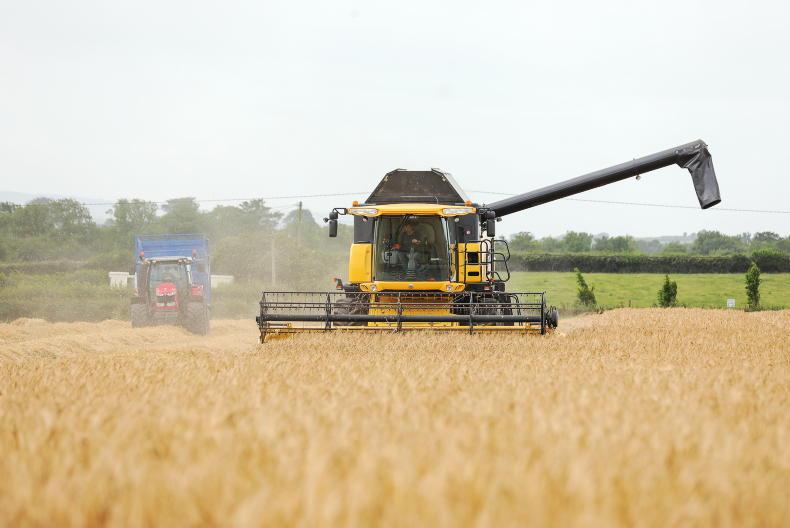Harvest
Harvest has started across the country, with combines rolling for many. Crops cut so far have mainly been planted by early October, or are some of the early ripening varieties, like KWS Joyau, and some hybrid varieties. Quality so far is good, with many yields around 3.5t/ac and above. KPH varies across varieties. See a full harvest report in the news pages. The next spell of dry weather will most likely see many more growers move to the fields.
Oilseed rape
There are many new growers of oilseed rape this year. When desiccating oilseed rape, it is important to get the timing right to get an even crop to harvest. Teagasc advice is to take representative samples from the crop and pick 20 pods. If two thirds of the seeds are brown in at least 15 of the pods, then this is the earliest time for spraying with glyphosate. Check with your adviser on the rate of glyphosate to be used and if a sticker is needed. Water volume should be high for good coverage of the crop. An interval of 14-21 days is needed between spraying and harvest.
Stubble cultivation rules
Nitrates rules, which came into effect last year, mean that stubbles need to be cultivated within 10 days of straw chopping and in all cases within 14 days of harvest or baling. These rules apply to Louth, Meath, Westmeath, Dublin, Wicklow, Wexford, Kilkenny, Carlow, Kildare, Laois, Offaly, Tipperary, Cork and Waterford. Cultivation is not required, but can be carried out, ahead of winter cereals. In total, 20-25% of cereal land can be left uncultivated to provide a habitat for birds. Stubbles should not be cultivated where blackgrass and some bromes are present, as they need light to germinate. In this case, they are to be rolled or left as part of the 25% not cultivated.
Resistant annual meadow grass: Keep an eye out for herbicide resistance to annual meadow grass. This season, a number of cases have emerged of possible resistance of annual meadow grass to some post-emergence herbicides. Farmers will spot resistance in their fields if they see some annual meadow grass controlled and other meadow grass still growing side-by-side.
TIS applications
The closing date for applications to the Tillage Incentive Scheme (TIS) is this Friday, 7 July. It only takes a short time to complete on agfood.ie. Farmers who availed of the scheme last year and maintained that land in tillage, should apply again for a maintenance payment of €200/ha – while new applicants can receive a payment of €400/ha. To receive the €400/ha payment, a tillage crop needed to be planted into grassland and the area of tillage must have increased from 2022 to 2023. Mixed crops are not allowed in the scheme. See full details on the next page.
Varieties focus: Next week, we will have a focus on varieties in the paper, featuring the new and upcoming varieties.






 This is a subscriber-only article
This is a subscriber-only article










SHARING OPTIONS: